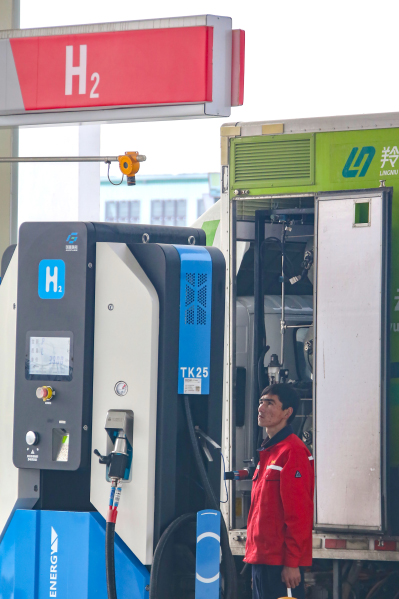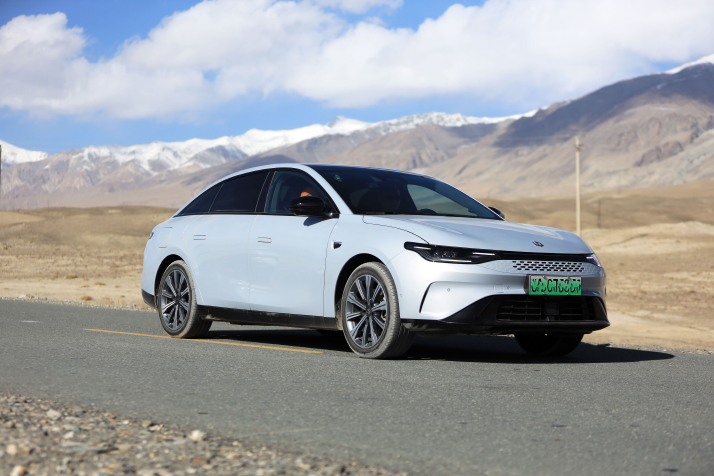| Xinjiang Today |
| A guide to new-energy road trips in Xinjiang | |
|
|
 (PHOTO BY VCG)
Why Green License Plates? Green license plates are exclusively designated for new-energy vehicles (NEVs) in China, providing immediate distinction from conventional blue license plates. NEVs are defined as vehicles powered entirely or primarily by new energy sources, encompassing battery electric vehicles (EVs), plug-in hybrid vehicles, and hydrogen fuel-cell vehicles. Xinjiang is emerging as an ideal testing ground for these advancements. Beyond EVs, hydrogen fuel-cell vehicles are gaining traction throughout the region. Hydrogen fuel-cell buses, for example, can be refueled in approximately 10 minutes, much quicker than EVs, and have a driving range exceeding 600 km. Notably, their propulsion systems are designed to withstand temperatures as low as minus 30 degrees Celsius in Xinjiang. Demonstrating its commitment to this technology, the Xinjiang regional government has identified Urumqi, Karamay and Hami cities and Ili Kazak Autonomous Prefecture as the first hydrogen energy industry demonstration zones. Therefore, the NEVs visitors rent for their self-driving adventure in Xinjiang could very well be powered by hydrogen fuel cells.  (PHOTO BY VCG)
Cruising Xinjiang With EVs
Xinjiang has established an extensive network of charging infrastructure for EVs. By the end of 2024, the region had 2,777 charging stations and 29,190 charging piles. Tesla drivers will find Supercharger stations conveniently located approximately every 180 km. The affordability of electricity in Xinjiang is another perk, and is largely due to the region's primary use of solar and wind power. At Urumqi's Tesla Supercharger station, the kilowatt-hour (kwh) cost is around 1.79 yuan ($0.24), roughly one third of the price in Europe. Furthermore, Xinjiang had numerous photovoltaic (PV) poverty alleviation power stations. These stations generate electricity at exceptionally low cost and the revenue was used to support local poverty alleviation efforts. After Xinjiang bid farewell to absolute poverty in late 2020, they continues to provide funding to programs aimed at improving villagers' lives. Wind and Solar Power Infrastructure In mid-2024, the Power Construction Corp. of China announced it had connected the second section of its 3.5-gigawatt PV project to the power grid. Located in the northern desert of Midong District, Urumqi, the project covers approximately 13,333 hectares—an area 2.2 times the size of Manhattan. The UK's The Independent newspaper noted the electricity generated by this remarkable PV installation is sufficient to meet the entire annual electricity demand of Luxembourg. A mere two-hour drive north from downtown Urumqi offers visitors the opportunity to witness this awe-inspiring marvel in the desert. Alongside this, Xinjiang is experiencing rapid growth in its generation of wind power. Wind power generation reached 75.39 billion kwh in 2024, greater than one fourth of the UK's annual electricity consumption. The towering wind turbines dotting the landscape of Xinjiang's deserts have become part of the region's unique scenery. |
|
||||||||||||||||||||||||||||||
|